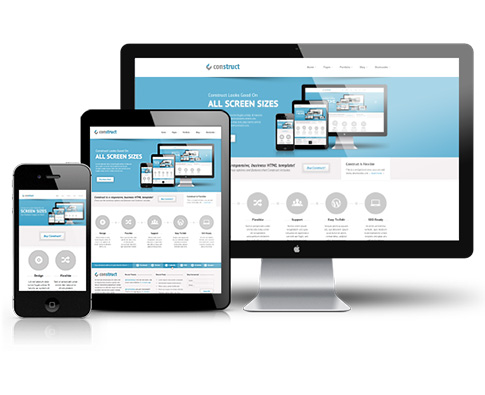The Top 10 Trends you Need to Look Out For in 2018
The logo design business is changing at a rapid pace. What was on-point five years ago might not even ring a bell today! As techniques for attracting customers become more sophisticated, logo design must keep in step with these trends. New ideas develop rapidly and designers are having a hard time following them.
Fortunately, the design experts at Castle are committed to reviewing short-lived trends and projecting where the logo design business is heading. With the help of the team, Castle has put together 10 developments that will dominate 2018.
For Simplification
This design format is about stripping your logo to the bone, giving it clean lines and a minimalist vision. Evolving internet technologies and cross-platform necessities are some of the features that revived this movement. Your symbol must look great across all media, and that means business cards and sites, to mobile apps.

Logotype with Simple Shapes
Clear font married with simple, geometric forms, will maintain their ground, having developed more in 2017, this prevailing trend is gaining momentum because logotypes are known for their straightforwardness and rationality. Their simple graphic elements give your logo a stable, dependable look, and if used judiciously, geometric shapes create strong optical effects that raise your logo above those of your competitors.

Letter Stacking
This is another sizzling development for logotypes. The concept sees words placed on top of one another, ensuring longer phrases are easier to distinguish. Letter stacking best with colours that contrast, and a guaranteed way toward originality and grabbing the attention of your potential customers. This trend made splashes in the last couple of years, and it appears businesses can’t get enough. Cultured and graceful, letter stacking will maintain its ground this year too.
Coat of Arms
2017 brought in multiple designs replicating heraldic coats of arms, emblems, and royal-style stamps. The text is often placed inside a shield, circle or semi-circle, dates are usually added as a common element. Muted colours and clear graphics create strong retro ideas and concepts. Logos such as these are evocative making associations with longevity, tradition, or heritage.
Slices
In design, slices are expansive parallel lines that appear to make ‘cuts’ in the logo. This movement will become more prevalent in the coming year. Slicing adds some ‘air’ to the logo, making it easier to take in. You can also use this method to utilise negative space using smart effects and visual illusion as well as giving your logo a surfaced three-dimensional appearance.
Negative Space
This practice needs no introduction. Designs with negative space have been around for a number of years, and this year will be no exception. This movement has progressed over the years, shifting from logo marks to logotypes and we are now seeing more designs with images or shapes concealed inside or between letters.
Text as a Playground
It appears as though 2017 was dominated by logotypes, but as the main branding device, typography has not yet been explored fully. As well as the techniques already cited, creators are experimenting with font amalgamations, kerning, spacing, and much more.

Gradients and Colour Transitions
Transitions in colouration can be effectively applied to both text and icons, especially for huge, bulky fonts but now graphic designers have rediscovered the power of gradiation, and this trend will not fade away anytime soon (pun intended).
Overlaps
MasterCard’s latest design overhaul breathed new life into this skill, overlaying vibrant colours creates a fresh hue, giving your design added depth, while demonstrating its ability to feature across all types of brands, including prestigious organisations.

Lettering
Even though the lettering is being replaced by minimalist designs, lettering still holds a prominent, traditionalist position. A wide range of businesses use intricate inscriptions, including restaurants, hairdressers, and photographers for instance, and they will continue to explore the power of this style.
If you are still short on ideas or would like a professional opinion, then contact a member of our team for a second opinion. Remember to follow us on our social media profiles to stay up-to-date with the latest marketing news.
